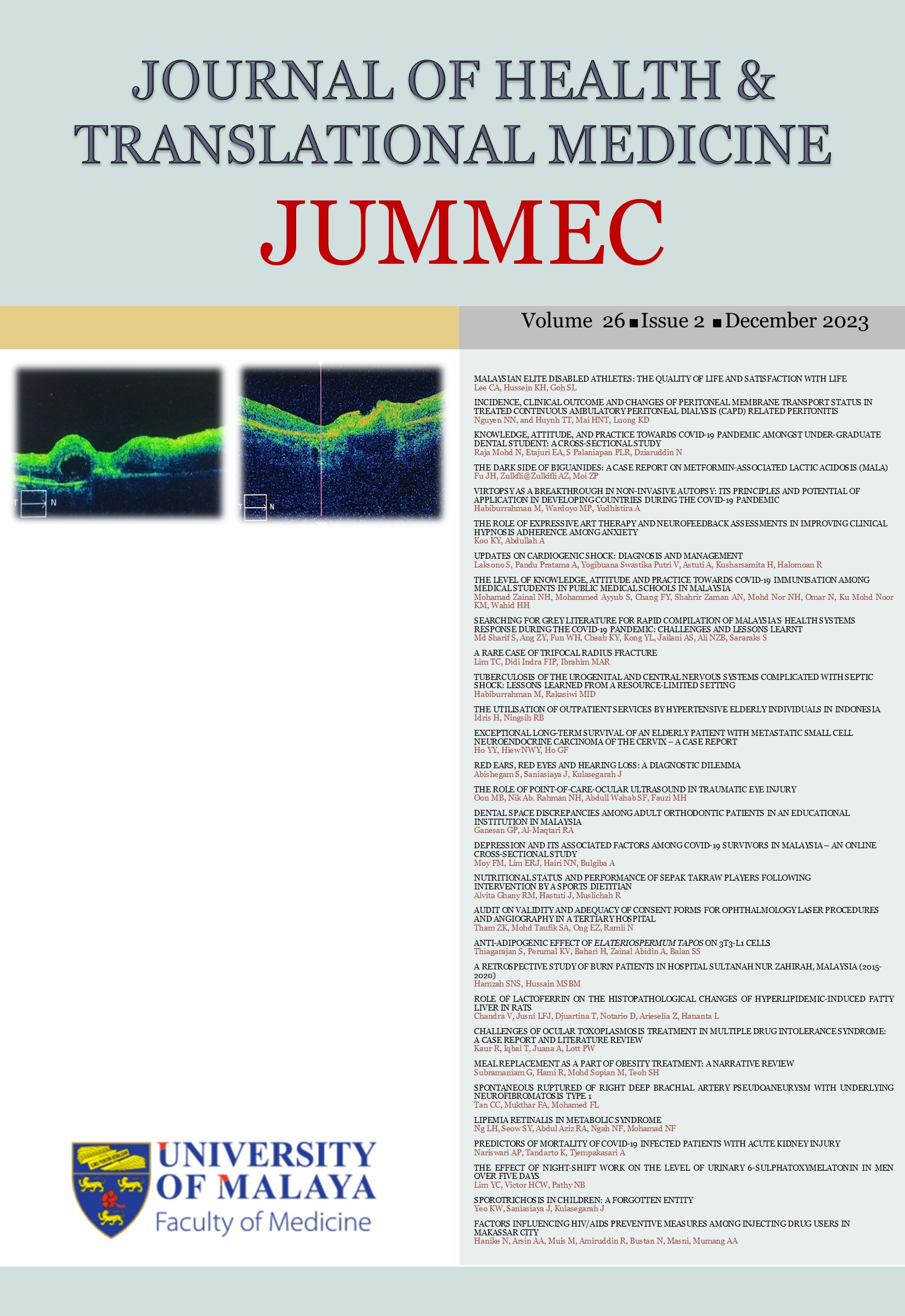LIPEMIA RETINALIS IN METABOLIC SYNDROME
Received 2022-05-24; Accepted 2023-06-12; Published 2023-10-11
DOI:
https://doi.org/10.22452/jummec.vol26no2.26Abstract
A 19-year-old female with a history of pure gonadal dysgenesis and metabolic syndrome was undergoing regular diabetic eye screening. Recent clinical examination revealed bilateral creamy-white retinal vessels, in keeping with the features of lipemia retinalis (LR). Optical coherence tomography (OCT) images also show hyperreflective deposits accumulated in the dilated retinal vessels with a shadowing effect. Further investigations showed a total serum cholesterol level of 24.2 mmol/L and an unreadable triglyceride level due to a lipemic blood sample. Her medications were increased to T. atorvastatin 40 mg at night and T. ezetimibe 10 mg once daily by her physician. Unfortunately, she developed acute pancreatitis secondary to diabetic ketoacidosis with hypertriglyceridemia 3 months after the diagnosis of LR. LR is a clinical indication of a very high triglyceride level when laboratory testing is not possible. The high comorbidities associated with hypertriglyceridemia and diabetes may warrant close monitoring for cardiovascular disease and life-threatening pancreatitis.
Downloads
Downloads
Published
Issue
Section
License
All authors agree that the article, if editorially accepted for publication, shall be licensed under the Creative Commons Attribution License 4.0 to allow others to freely access, copy and use research provided the author is correctly attributed, unless otherwise stated. All articles are available online without charge or other barriers to access. However, anyone wishing to reproduce large quantities of an article (250+) should inform the publisher. Any opinion expressed in the articles are those of the authors and do not reflect that of the University of Malaya, 50603 Kuala Lumpur, Malaysia.


